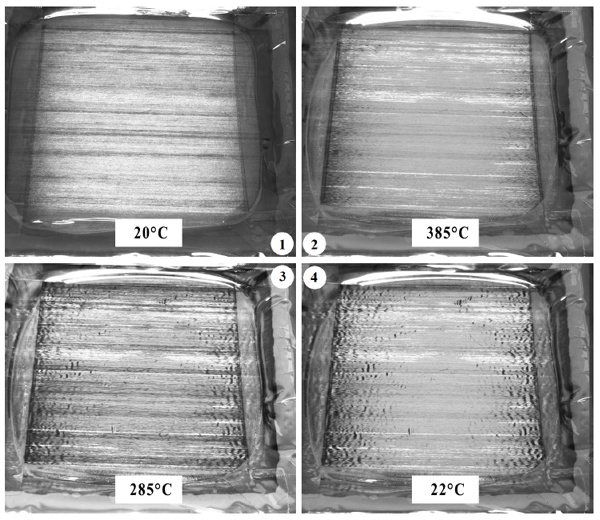Defect-Free Manufacturing of Thermoplastic Composites Structures
2017-2021
Summary
Processing of continuous fiber reinforced thermoplastic structures involves a number of manufacturing steps, which include for example blank consolidation and press forming to manufacture clips and brackets which are then used to connect autoclaved stiffeners and skins via a welding process. Processing defects such as fiber wrinkling, dry spots or delaminations may occur during this processing cycle. Components with such defects are generally scrapped, as the influence of the defects on mechanical performance is unknown. Reduction of the scrap rate can be achieved following two (non-exclusive) routes. Firstly, proper understanding of defect formation allows robust optimization of processing parameters as well as material properties with the aim to reduce or remove the defect. This requires a multi-scale approach as the defects generally occur on the micro to meso scale, while the forming process itself is considered on a macro scale for computational efficiency. Secondly, knowledge of the effect of defects on the mechanical performance potentially allows alleviation of the (often stringent) conformance rules. Experimental evaluation of the effect of defects on the mechanical performance is a laborious task, as there is a large variety in type, size and severity of the defects and, moreover, the defects are often difficult to reproduce in typical test specimens. Therefore, progress can only be achieved by combining modelling and experimental work.

In-situ observation of wrinkling formation during a VBO consolidation cycle. Top left: Start of cycle. Top right: Maximum temperature, start of waviness formation during cooling. Bottom left: End of waviness formation during cooling. Bottom right: End of cycle.
Staff:
Partners:
- Industrial partners: ThermoPlastic composites Research Center
- Financed via UT Impulse Program.



